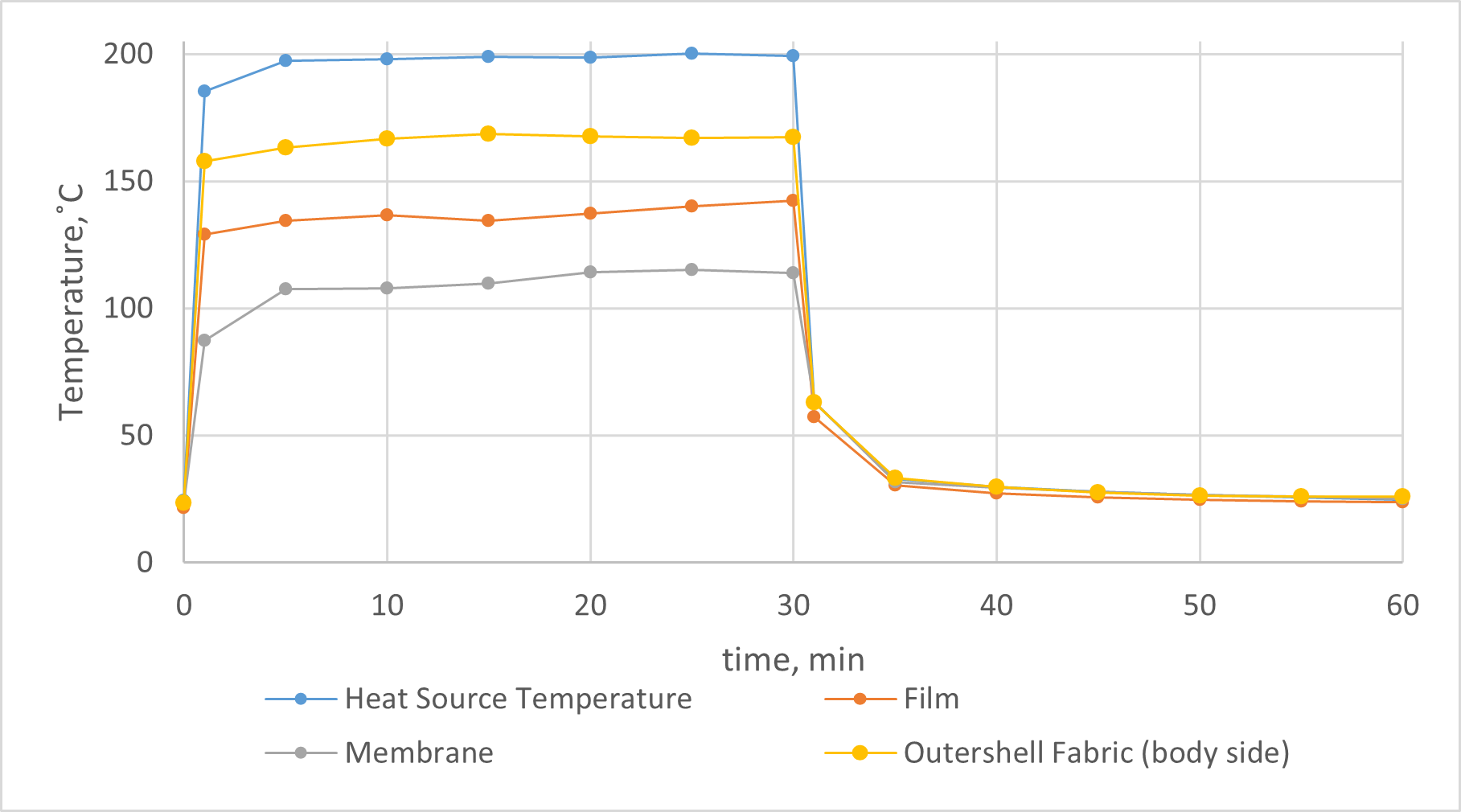An innovative thermal protective clothing system for firefighters
DOI:
https://doi.org/10.25367/cdatp.2022.3.p146-155Keywords:
Thermal Protective Clothing, Firefighters, Phase Change Materials, Heat ProtectionAbstract
Nowadays, despite the evolution of personal protective equipment (PPE), the number of firefighters injured and burned during fire extinguishing operations is still very high, leading in some cases to loss of life. Therefore, the research and development of new solutions to minimize firefighters’ heat load and skin burns, with consecutive improvements of commercial firefighters’ suits, is of extreme importance. The integration of phase change materials (PCMs) in a protective clothing system has been used to significantly reduce the incoming heat flux from the fire environment. This study consists in the development of a protective clothing system composed by a vest, specially designed to protect the torso (back, chest and abdomen) with a layer of PCM pouches, to be worn over a fire-resistant jacket – selection and design based on numerical models’ predictions. Therefore, several mockups were made, varying the number of PCM pouches and their distribution in the vest, allowing the creation of air ducts to increase the breathability of the vest. The most promising solutions are being evaluated in a real controlled environment, at a Portuguese National School of Firefighters (ENB) simulation site, using a fire manikin and thermocouples to monitor vest temperature during heat and flame exposure, and consequently to verify PCMs influence in heat protection. Results regarding the development of a PCM vest will be presented, focusing on the integration of PCM pouches and the thermal performance of the most promising solutions.
References
2. Molina-Terrén, D. M.; Xanthopoulos, G.; Diakakis, M.; Ribeiro, L.; Caballero, D.; Delogu, G. M.; Viegas, D. X.; Silva, C. A.; Cardil, A. Analysis of forest fire fatalities in Southern Europe: Spain, Portugal, Greece and Sardinia (Italy). International Journal of Wildland Fire 2019, 28(2), 85-98. DOI: 10.1071/WF18004.
3. Song, G. W. and Wang, F. M. Firefighters’ clothing and equipment: performance, protection and comfort; CRC Press, 2018.
4. Fonseca, A.; Mayor, T. S.; Campos, J. B. L. M. Guidelines for the specification of a PCM layer in firefighting protective clothing ensembles. Applied Thermal Engineering 2018, 133, 81-96. DOI: 10.1016/j.applthermaleng.2018.01.028.
5. Zhu, F.; Feng, Q. Q.; Liu, R.; Yu, B.; Zhou, Y. Enhancing the thermal protective performance of firefighters’ protective fabrics by incorporating phase change materials. Fibres and Textiles in Eastern Europe 2015, 23(2), 68-73.
6. Phelps, H. L.; Watt, S. D.; Sidhu, H. S.; Sidhu, L. A. Using Phase Change Materials and Air Gaps in Designing Fire Fighting Suits: A Mathematical Investigation. Fire Technology 2019, 55(1), 363-381. DOI: 10.1007/s10694-018-0794-z.
7. Fonseca, A.; Neves, S. F.; Campos, J. B. L. M. Thermal performance of a PCM firefighting suit considering transient periods of fire exposure, post-fire exposure and resting phases. Applied Thermal Engineering 2021, 182, 115769. DOI: 10.1016/j.applthermaleng.2020.115769.
8. Durrant, C. A. T.; Simpson, A. R.; Williams, G. Thermal injury – The first 24 h. Current Anaesthesia and Critical Care 2008, 19(5-6), 256-263. DOI: 10.1016/j.cacc.2008.09.014.

Downloads
Published
Versions
- 2022-09-03 (2)
- 2022-09-03 (1)
How to Cite
Issue
Section
License
Copyright (c) 2022 Gilda Santos, Rita Marques, Francisca Marques , João Ribeiro , André Fonseca , João M. Miranda , João B. L. M. Campos, Soraia F. Neves

This work is licensed under a Creative Commons Attribution-NonCommercial-NoDerivatives 4.0 International License.





